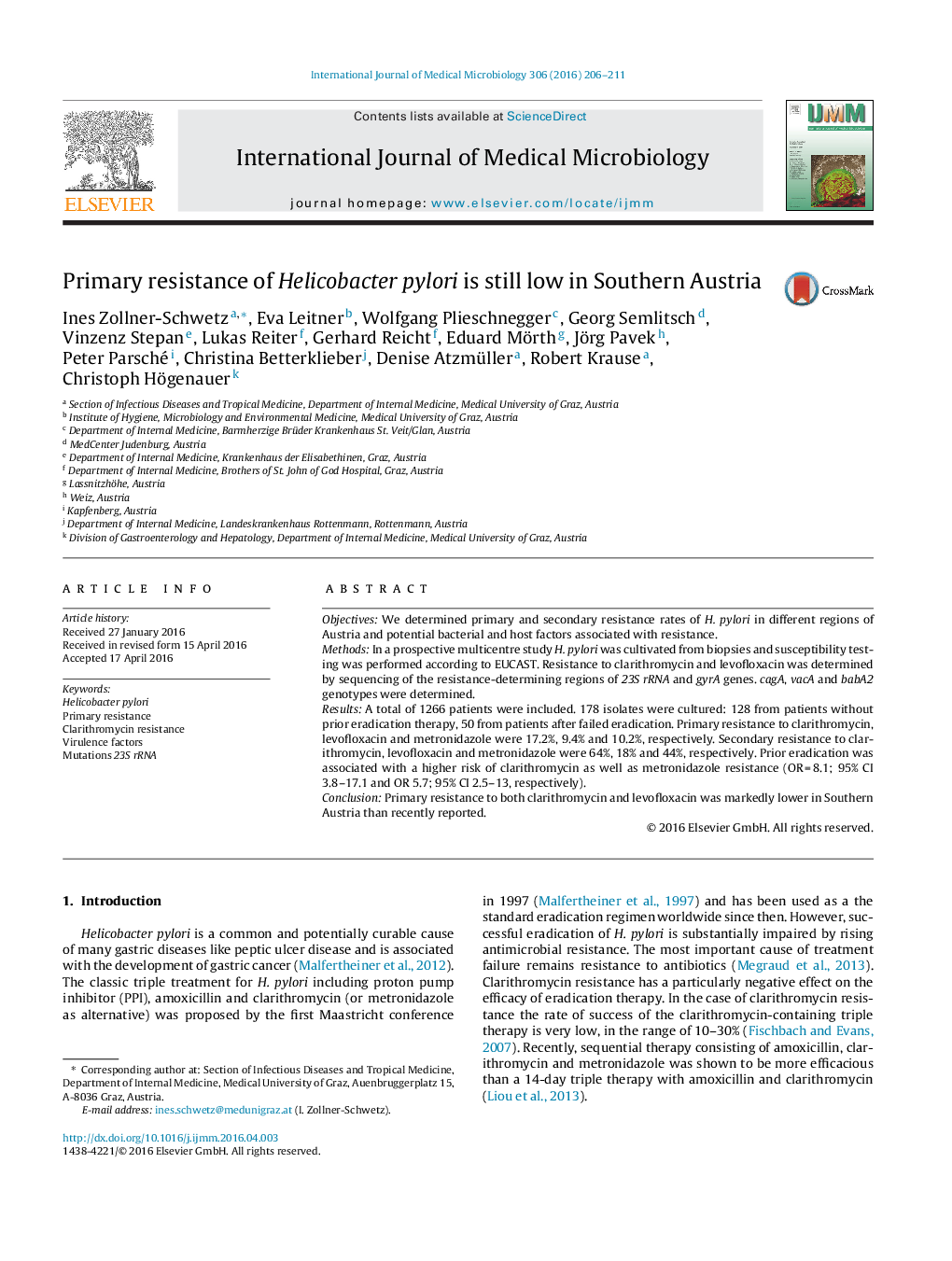| Article ID | Journal | Published Year | Pages | File Type |
|---|---|---|---|---|
| 2053810 | International Journal of Medical Microbiology | 2016 | 6 Pages |
•Primary resistance to clarithromycin lower in Austria than recently reported.•Prior eradication associated with a higher risk of clarithromycin resistance.•Local resistance surveillance essential as basis for therapeutic strategies.
ObjectivesWe determined primary and secondary resistance rates of H. pylori in different regions of Austria and potential bacterial and host factors associated with resistance.MethodsIn a prospective multicentre study H. pylori was cultivated from biopsies and susceptibility testing was performed according to EUCAST. Resistance to clarithromycin and levofloxacin was determined by sequencing of the resistance-determining regions of 23S rRNA and gyrA genes. cagA, vacA and babA2 genotypes were determined.ResultsA total of 1266 patients were included. 178 isolates were cultured: 128 from patients without prior eradication therapy, 50 from patients after failed eradication. Primary resistance to clarithromycin, levofloxacin and metronidazole were 17.2%, 9.4% and 10.2%, respectively. Secondary resistance to clarithromycin, levofloxacin and metronidazole were 64%, 18% and 44%, respectively. Prior eradication was associated with a higher risk of clarithromycin as well as metronidazole resistance (OR = 8.1; 95% CI 3.8–17.1 and OR 5.7; 95% CI 2.5–13, respectively).ConclusionPrimary resistance to both clarithromycin and levofloxacin was markedly lower in Southern Austria than recently reported.
